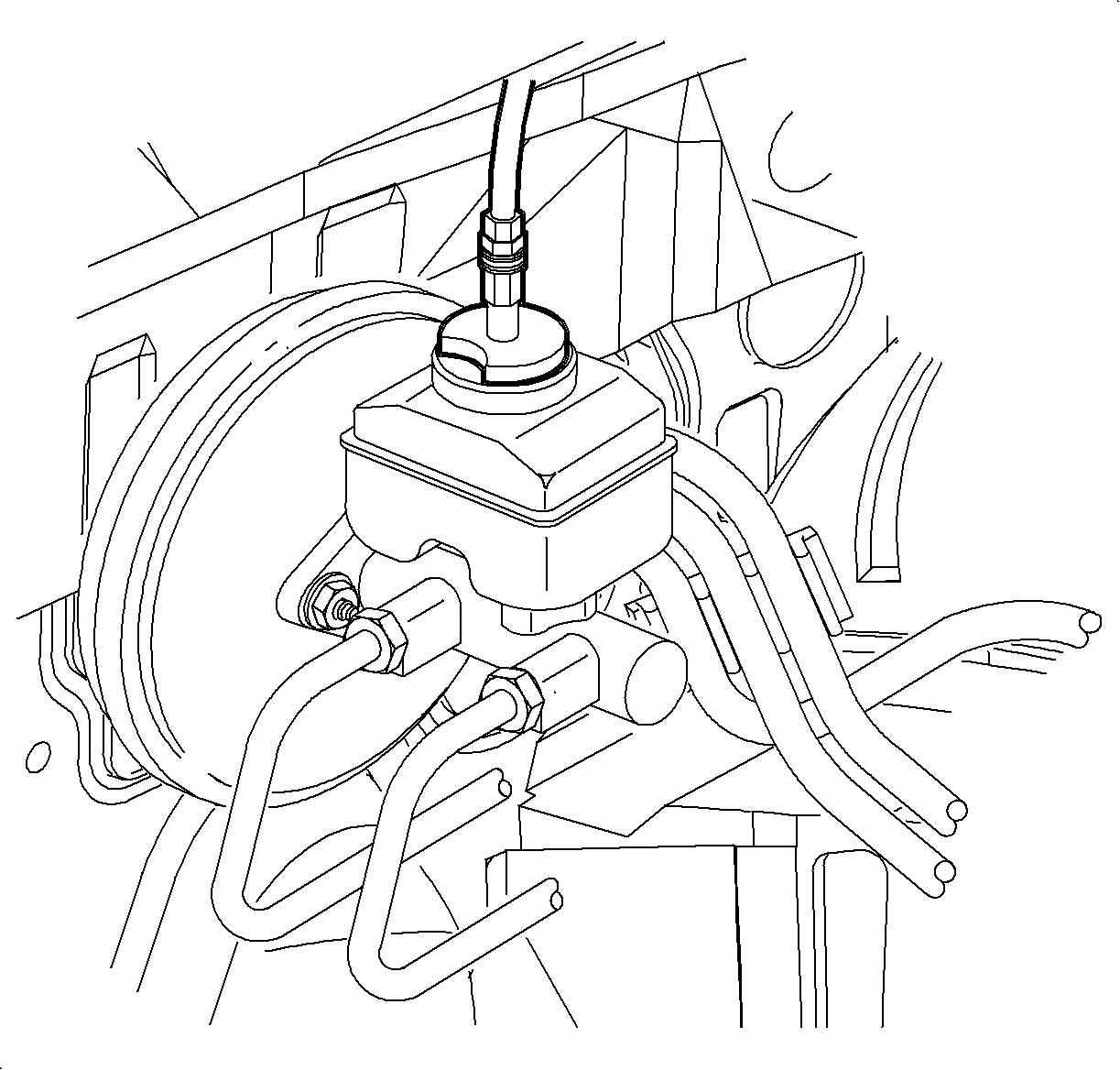Hydraulic Clutch Bleeding Manual Bleeding
- Clean the brake fluid reservoir cap and the area around the cap.
- Remove the cap and fill reservoir with clean brake fluid.
- Attach the transparent hose over the clutch bleeder screw nipple. Submerge the other end of the hose in a container of brake fluid.
- Depress the clutch pedal and hold down.
- With the clutch pedal depressed, loosen the clutch bleeder screw on the transaxle hydraulic fitting. Allow the brake fluid to drain from the bleed screw and tighten the bleeder screw.
- Raise the clutch pedal.
- Repeat steps 4-6 until no air bubbles are seen in the hose.
- Check the clutch pedal feel for sponginess. If the clutch pedal exhibits this feel, repeat the bleeding procedure until the condition is gone.
- Check the fluid level in the brake fluid reservoir. Add fluid as necessary.
Notice: Refer to Clutch Hydraulic System Lubricant Notice in the Preface section.

Important: This procedure outlines how to bleed the clutch hydraulic system with the transaxle in the vehicle. If the transaxle has been removed from the vehicle, the clutch slave cylinder must be bled prior to installing the transaxle. Refer to Hydraulic Clutch Bleeding .
Hydraulic Clutch Bleeding Pressure Bleeding
Tools Required
| • | J23738 Vacuum Pump |
| • | J45727 Rubber Stopper |
- Tighten the bleed screw.
- Make sure the pedal is in the up position.
- Fill the reservoir with specified fluid to the Max level.
- Install the J45727 and attach to a J23738, or equivalent, with a length of hose.
- Place and hold the stopper over the top of the reservoir to ensure a tight fit.
- Operate the pump to achieve 103-138 kPa (15-20 psi) on the gage.
- Hold the vacuum for approximately 1 minute.
- Slowly relieve the vacuum and remove the stopper from the reservoir.
- Replenish the fluid to the proper level.
- Repeat steps 5-9 until all air is out of the system.
- Replace the reservoir cap.
- Actuate the clutch pedal 10-12 times to ensure proper operation.
- Test drive the vehicle to ensure proper clutch operation and shifting.

Tighten
Tighten the bleed screw to 7 N·m (62 lb in).
Important: The clutch pedal will go to the floor on the first actuation, but should improve on the following actuations.
Hydraulic Clutch Bleeding Clutch Slave Cylinder
Tools Required
| • | J 35555-92 Pressure Adapter |
| • | SA9180NE Vacuum Pump |
- Connect a 450 mm (17.8 in) long piece of transparent hose to the slave cylinder fitting on the transaxle.
- Depress the release bearing on the slave cylinder towards the clutch housing and then release it. Even though the release bearing will spring back, the slave cylinder piston will remain depressed next to the clutch housing.
- Fill the hose with 350 mm (13.8 in) of DOT 3 brake fluid.
- Connect the SA9180NE with the J 35555-92 to the top of the hose.
- Apply pressure to the hose to force brake fluid into the slave cylinder. Pressure on the gage will increase when the slave cylinder piston reaches the end of travel.
- Remove the vacuum/pressure pump from the hose and depress the release bearing. Air bubbles will appear in the hose.
- Repeat steps 5-6 until no air bubbles appear in the hose. Leave the slave cylinder piston in its depressed position.
- Drain and remove the hose.
Important: This procedure describes how to bleed the clutch slave cylinder when the transaxle is out of the vehicle. If the transaxle is in the vehicle, refer to Hydraulic Clutch Bleeding .
Notice: Do not use mineral oil or a paraffin base oil in the hydraulic system. These fluids will damage the rubber parts in the cylinders. Only DOT 3 brake fluid should be used.
